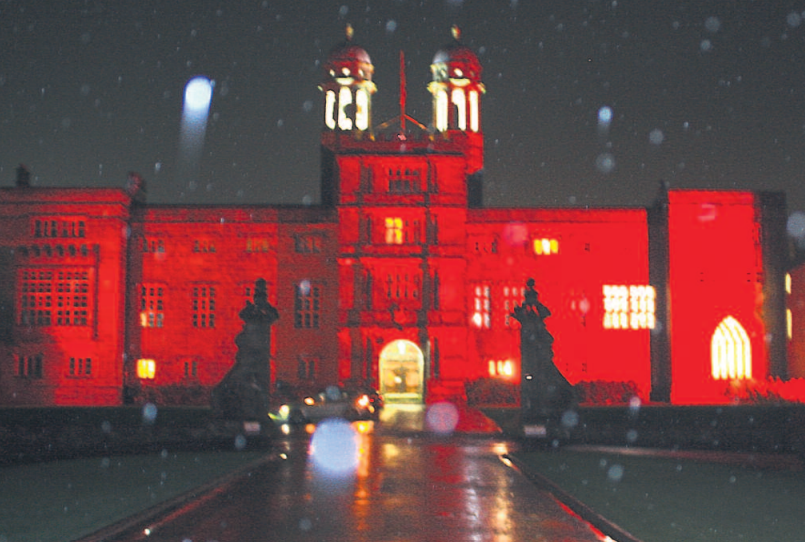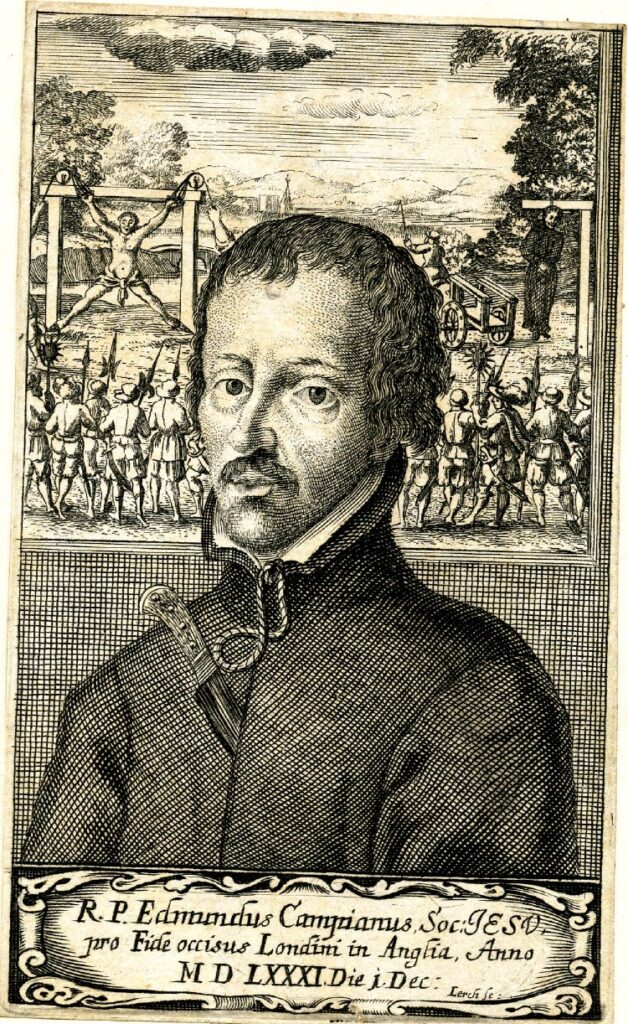Friday 3rd November 2017
The CHC @ The Catholic Universe
St Edmund’s rope binds us to the memory of his sacrifice
Christopher Graffius
At Stonyhurst there’s a rope. Among all the treasures of the College this receives the most honour. Housed in a reliquary, it is placed on the altar on the great feast days. The pupil who carries it there, amid the candles and the incense, on its feast day on 1st December, will never forget the experience.
A simple rope, some five hundred years old. The rope that bound St Edmund Campion to the hurdle on which he was dragged to execution. A rope smuggled away from the butchery and worn by Fr Robert Persons, the founder of the college who escaped the martyrdom of his companion, round his waist for the rest of his life. What’s the point of a rope? Is it merely a cultural artefact collected amid the gore? Or does it hold a greater meaning? As the new Christian Heritage Centre rises at Stonyhurst these are questions worth asking.
Museums must have some relevance or the exhibits are merely dry as dust. That simple rope holds a message as important to us today as it was when it played its part in Campion’s sacrifice.
As Westminster Cathedral, Stonyhurst and many other buildings are floodlit red on 22nd November – Red Wednesday – and Christians commemorate the killing of today’s modern martyrs, there is a direct link to Campion and others who have died for their faith.
Campion epitomises the heroism of recusant England.
Fr Clement Tigar, who championed the cause of the Forty Martyrs, wrote: ‘In June 1580, when Campion landed on these shores in disguise, he brought with him the spirit of chivalry in defence of the ancient Faith. By his holiness of life, his unquenchable good humour, his charm of manner, his burning eloquence, he put new heart, new courage, new enthusiasm, into the persecuted, dejected Catholics of England.’
It hadn’t always been so. Campion was a scholarship boy and learned early to please the establishment. He was chosen to speak before Queen Mary on her visit to the City and later, as a student at Oxford, to debate before Queen Elizabeth. He was described as “one of the diamonds of England”. Great men offered him patronage. In the turmoil of the Reformation this promised safety. His friend, Tobie Matthew, urged him to embrace the opportunities. Campion accepted ordination as an Anglican deacon and barred himself from the sacraments for twelve years.
His conscience troubled him. Matthew, who told him not to bother, went on to become the Anglican Bishop of Durham and Archbishop of York. As Evelyn Waugh says in his classic biography of Campion: ‘Tobie Matthew died full of honours in 1628, there but for the Grace of God went Edmund Campion.’
‘Hope, greatest and
ever-present to the Dead,
Hope is the Host
which I behold;
Here, be assembled
here,I pray;
Here celebrate God, and for
the afflicted seek peace.’
– An extract from Anima. The
original copy of Anima, which
Edmund Campion composed in
Latin in 1581 as he was
returning to the mission field in
England – and to certain death
– is held in the Collections
Nevertheless, many remained loyal to the Church, and Catholicism was particularly strong in some of the great aristocratic households of the Thames Valley and the Sacred County of Lancashire. It was to these houses, with their secret Catholic chapels and holes in which the sacred vessels and vestments (as well as the priests themselves in time of emergency) could be hidden, that Campion went to minister. In disguise he travelled extensively ‘through the most part of the shires of England’ (Persons) hearing confessions and saying Mass for the faithful who would have had no access to the sacraments for many years and yet who had kept faith.
During this time Campion wrote Decem Rationes defending the claims of the Church against those of the state church. This document was widely circulated and led to an increase in the government.
He escaped overseas and was reconciled at Douai. He walked to Rome to join the Jesuits. He was assigned as a school master to the college at Prague. He might never have seen England again. A life in community and academia beckoned.
The call to the English mission came as a surprise. Campion answered it despite his fear that he had not the “constitutional courage”. He entered the country disguised as a jewel merchant and with Persons and others began the reorganisation of the scattered and dispirited Catholics. He travelled across the country between safe houses, confessing, offering the Mass, putting new spirit into those worn down by fines and imprisonment. “The harvest is wonderful…I cannot long escape the hands of the heretics; the enemy have so many eyes…I am in apparel to myself very ridiculous…”
With Persons he set up a secret printing press to circulate his ‘Ten Reasons’ for being a Catholic and his ‘Brag’ a justification of his mission and a challenge to the authorities. ‘And touching our Society, be it known to you that we have made a league—all the Jesuits in the world…cheerfully to carry the cross you shall lay upon us, and never to despair your recovery, while we have a man left to enjoy your Tyburn, or to be racked with your torments, or consumed with your prisons. The expense is reckoned, the enterprise is begun; it is of God; it cannot be withstood. So the faith was planted: so it must be restored.’
In the summer of 1581 he rode out of London, pausing at Tyburn to pray under the gallows. “Because”, says Persons, “he used to say that he would have his combat there.” He stopped at the Catholic house of Lyford Grange to say Mass, but there was a priest hunter in the congregation. The Gospel of the day was prophetic, ‘Jerusalem, Jerusalem, thou that killest the prophets.’
Captured, he was bound to his horse with the sign ‘Campion, seditious Jesuit’ pinned to his hat. He disappeared into the Tower for four months of interrogation and torture. Rumours flew, he had recanted, accepted a bishopric, betrayed his hosts. When he emerged, brought to debate with the Anglican divines, it was the same gentle, eloquent Campion who confounded his adversaries. Except, at his trial, he couldn’t lift his right arm to take the oath because of the racking.
Condemned to death by perjured witnesses and a packed jury, Campion spoke for all Catholics: “In condemning us, you condemn all your own ancestors, all our ancient bishops and kings, all that was once the glory of England; the island of saints, and the most devoted child of the See of Peter.”
He was dragged to execution on 1st December, his feast day. He greeted the crowd “God save you all, and make you all good Catholics.” His final words were to pray for the Queen; that “we may at last be friends in heaven, when all injuries shall be forgotten”.
So to the rope. We all face the same choice, whether to conform or stand for the truth. Today, we will probably not be called to a physical martyrdom. Instead we face the hostility of secularism, of licence masquerading as liberty and the marginalisation of spirit and faith. That’s as much a threat as anything the martyrs faced. Meeting it demands the constant courage and faithfulness that Campion inspires
That’s what the rope means.



